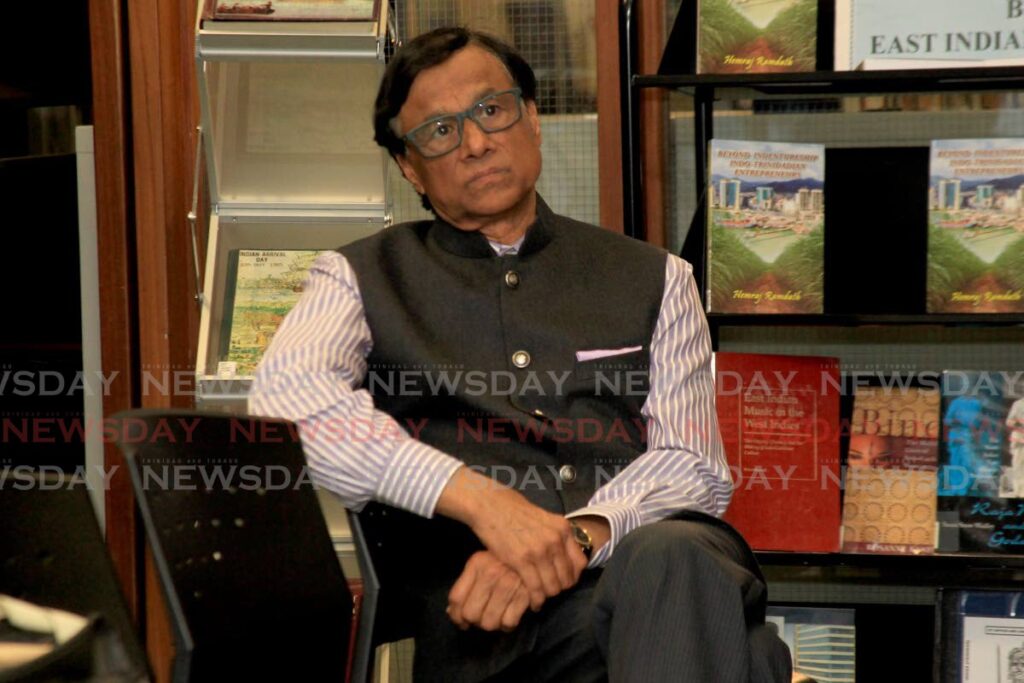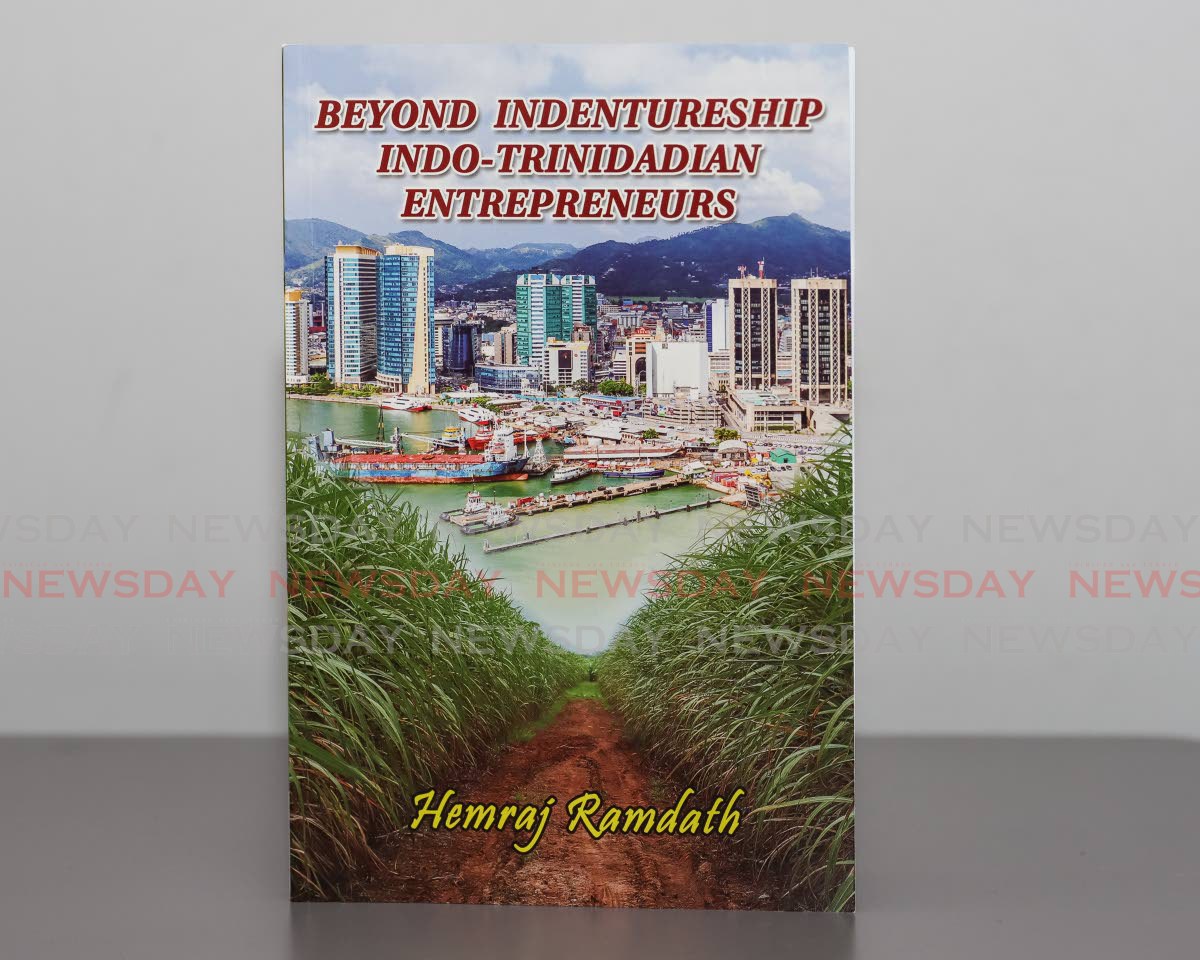Indo-Trinidadian companies built out of indentureship

SM Jaleel and Company Ltd, Sacha Cosmetics and Charran’s are businesses with which many Trinidadians are familiar.
While their history might be documented on websites and in books, these were all built by Indo-Trinidadian families.
This is told in business consultant Hemraj Ramdath’s new book: Beyond Indentureship: Indo-Trinidadian Entrepreneurs.
The book was launched earlier in May, but Ramdath also spoke about it at the launch of the National Library and Information System Authority’s (Nalis) exhibition Dharma re-enacted: Ramleela in Trinidad and Tobago on May 25.
Ramdath began working on the book in 2021, although he had planned to do it before the start of the covid19 pandemic.
As TT observes Indian Arrival Day, he felt it was important to highlight the contributions of Indo-Trinidadian businesses. Indian Arrival Day is observed on May 30 each year.
He called some of the 33 businesses featured in the book “legacy companies,” as some were formed during the period of indentureship. Indian Indentureship in TT took place from 1845-1917.
Ramdath said though some of these companies’ founders came as labourers, today, they were now the some of the largest employers, particularly in the service sector.
In the book’s dedication, to Ramdath’s maternal grandparents, he said, “My grandfather was born aboard the SS Avon on December 17, 1904, the 20th day of the ship’s voyage from Calcutta to Trinidad.
“As a newborn, he would survive 69 days under unimaginable sea and ship conditions.” His grandfather’s name was Rampersad.
He said his grandmother, Ramkaliah, was a market vendor for more than 30 years and, without formal education, taught him everything is possible with hard work, faith and determination.
In the book’s preface he said, “The role of the Indian indentured workers and their offspring during the Indentureship period of 1845-1920 (sic) in rescuing the threatened collapse of the plantation economy of Trinidad is well known and acknowledged.
“However, little detail has been given or written about the Indo-Trinidadian spirit of enterprise, Indo-Trinidadians’ incredible transition out of extreme poverty, their igniting of economic activities, their establishment of thriving communities and transforming rural villages into commercial-industrial centres with sustainable businesses.”
Some of these local brands such as Sacha Cosmetics are internationally known and operate in 30, 40 and even up to 100 countries, he said.
He said SM Jaleel products, Karibbean Flavours, Chatak Food Products are in at least 25-60 countries.
“These are all brands, made in TT, developed in TT and are global.
“They developed products in the family and entered all those markets.”
Ramdath asked how one put this into context when 145,000 East Indian indentured labourers came to TT. Caribbean-Atlas.com says between 1845 and 1917, a total of 143,939 Indians migrated to Trinidad under the system of indentureship.
He asked how was it possible that people who lived in barracks were able to transform their lives, especially coming from “a journey of pain.”
“Because they left behind their family, their friends, everything they knew….”
He said the labourers brought with them their value systems, religion, education and agricultural methods among other things.
They came from the sugar and rice industries and knew the value of agriculture and land, he said.
“Land ownership was a very important element for power and control. Most of those people were labourers on estates in India.”
Caribbean-Atlas.com says, “A wide cross section of the Indian caste system manifested itself among the indentured labourers. Hardly surprisingly, about 38 per cent came from the agricultural castes, 31 per cent from the low and labouring castes and about 13 per cent from the Brahmin/priestly caste.”
These things gave them the tools to do better, Ramdath said. This allowed for “entrepreneurship in motion,” whether it was in dairy farming, coconut, sugar or rice.
But the greatest pathway to Indo-Trinidadian entrepreneurship was the entry of these labourers into the sugar industry as independent farmers.
Ramdath said by the end of indentureship in 1920 there were about 14,000 independent cane farmers.
While some moved off the estates, many of Indo-Trinidadian independent cane famers stayed on the estates and transitioned to other things.
These independent farmers switched from ownership of sugar lands to cocoa during the period of low prices for sugar.
By the end of the 1920s, Indo-Trinidadian had about 60,000 acres of land allocated for cocoa, rice and other products.
“By the introduction of rice, they brought milling facilities and the milling equipment then allowed them to create a linkage with agro-processing companies.
“They were grinding the rice to separate the husks, but they were also doing things like pepper sauce, jams and jellies because it was the same machinery being used to process those.”
The “legacy companies” were formed during indentureship, Ramdath said.
These legacy companies still existed today. Rahamut Enterprises Ltd and Bhola-Syne’s Contracting and Industries Ltd are among those he defines as such.
“These were companies that were formed and managed by family businesses successfully up to today and continues to add value to TT.”
Ramdath said it was also particularly important to recognise the role East Indian women played in the growth and development of these businesses.
“For too long I think we have not recognised their contributions. Simply because they have been in the background although they were a pillar of strength.”
Ramdath cited the examples of SM Jaleel and Anna Mohammed, Pulbassia Charran of Charran’s and the mother of developer Dr Krishna Bahadoorsingh.
The Bahadoorsingh family, through its companies Caribbean Housing Ltd, Westmoorings Ltd
and Jang Estates Ltd is known for the development of many communities and spaces in TT inlcuding Westmoorings and Brentwood, Chaguanas.
Ramdath said the company began with the mother giving her two sons $90
in 1920.
The sons then went on to buy cloth and started selling on the streets in Penal and Port of Spain.
“They developed and built Westmoorings and is now doing Edinburgh Gardens in Chaguanas.”
Ramdath said many of these companies were now being recognised by their peers for their contribution and for assisting with the development of TT.
“It is an incredible transformation. That they were able to come here with very little, give back so much and (to) which we have not been paying enough attention.”



Comments
"Indo-Trinidadian companies built out of indentureship"